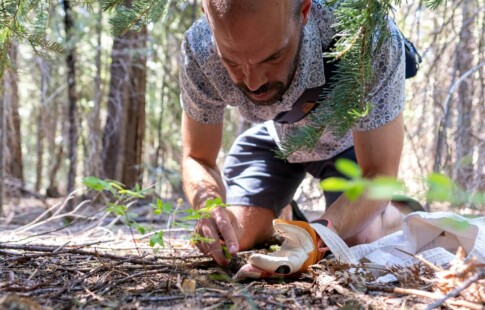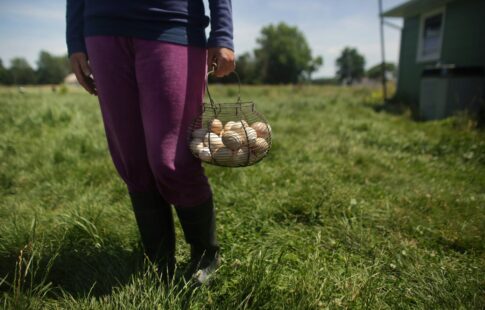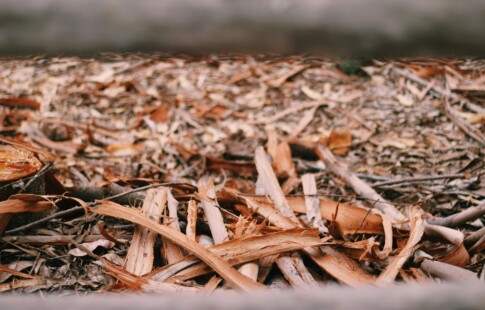
How to Compost in an Apartment: 8 Ways
We are reader-supported. When you buy through links on our site, we may earn affiliate commission.
New technology, programs, and accessibility options allow everyone to compost now, no matter their housing situation. The composting community online has garnered more significant attention on modern composting, even if households don’t grow their food. There is an increased awareness of the positive environmental impact of composting as people learn how to compost in an apartment — and not just on a homestead.
Why Composting Saves the Planet
Humans know food is biodegradable. However, it cannot compost unless it’s in the right circumstances. For food to break down in landfills like people expect when throwing food away, it has to have sun exposure, oxygen, and proper temperature to start the process. Most of the time, the conditions aren’t fit for food to break down in a landfill. Food that can’t break down releases greenhouse gases, contributing to the climate crisis.
Thousands of pounds of trash cover food waste, preventing the right conditions from being met. In this case, non-biodegradable materials are always more robust, and their sheer mass is why millions of pounds of food take much longer to break down. Almost 40% of food in the United States — from households, restaurants, supermarkets, and food manufacturing — gets wasted. It surfaces from these toxic, modern behaviors:
- Lack of follow-through when planning to cook with fresh produce.
- Buying more than the household needs because of sales or promotions.
- Fad diets or trends causing households to purchase foods they won’t eat.
- Oversights in food transportation in supply chains and shipping.
- Poor crop field analysis and treatment, leaving crops unpicked or untended.
Mass agriculture saps the soil of nutrients, and composting by breaking down food waste is the only way to return it efficiently. Therefore, it’s essential to learn how to compost in an apartment or the suburbs, because humans have to do their part to increase how much food can go through its natural process.
If You Have an Outdoor Area
Some apartments may have a patio, porch, or outdoor area. There are low-maintenance options and high-maintenance alternatives for those wanting a more involved composting experience.
1. Vermicomposting
If you’ve ever wanted to have worms for pets, composting with worm bins is a sustainable option. These in-ground systems rely on worms munching on the food scraps apartment residents throw in there, producing worm manure. It’s rich in nutrients, despite the idea of earthworm farming deterring introductory composters — specifically Eisenia foetida or Lumbricus rubellis. All apartment owners need to do is:
- Locate a spot for the worm bin, which can either be a plastic tote or a fancier setup.
- Lay down an oxygen-rich substrate for bedding, such as horse manure or corrugate.
- Add food waste to create a rich microbiome.
- Add worms.
- Shut them in with a lid to protect them from the light.
- Regularly stir the mixture with a compost aerator.
- Produce compost.
2. Open Air Windrow (OAW) Compost
If you want to engage in another form of classic composting, the open-air system could be the organic experience you’re craving. However, the most considerable drawback to this system is that it can’t handle food waste. Food needs an enclosure to compost successfully. The OAW method is viable for green matter, like mulch and grass clippings. If you produce any of these from your apartment, it’s an intelligent way to minimize these waste sources, and supplement it with another form of food composting.
3. Tumblers
Compost tumblers come in numerous shapes and sizes, composting food waste in potentially a month or less. These contraptions require brown matter, like straw or pine needles, in addition to food waste to ensure proper nitrogen levels. Rolling the tumbler a few times each week encourages the microbiome to thrive. Check weight limits for tumblers and ensure it’s still easy enough to turn, so it doesn’t prevent you from maintenance.
4. Animals
Other than worms, farm animals like chickens make great composting assistants. They aren’t picky, eating everything from bugs to eggshells. Their manure helps the soil, and their natural movements and foot shape turn soil naturally, keeping components moving for microorganism creation. Look into the best chicken-raising practices to ensure you treat them well and provide them with a lovely home — apart from their incredible natural utility.
If You Don’t Have an Outdoor Area
Even if you have an outdoor area, you want an indoor option for accessibility. These could have a higher price tag, because the nature of composting is usually a natural experience relying on an outdoor environment. However, new technologies and services reveal how to compost in an apartment with style.
5. Compost Pickup Services or Curbside Services
These options vary depending on location. Some cities or states have these options built into their city trash collection or recycling system, with an additional green matter bin to fill with food waste. Then, the city turns it into compost, leaving less responsibility on apartment tenants. Resources like city government websites or directories like Litterless help people find what’s available in their area.
Curbside services also depend on local availability. Some follow a similar system as city pickup services, and others provide bins, bags, and a mixture like bokashi flakes to promote an odor-free environment for indoor composting. Bokashi flakes are fermented organic materials that expedite composting processes.
6. Community Gardens and Farmers’ Markets
Sometimes, small, local farmers need help collecting food waste, or they’re happy to find a use for someone’s excess. Seek out community gardens or farmer’s markets to see if anyone would willingly accept food scraps from you weekly — ensure you’re handing off materials that are compostable with their method.
7. Composting Apps
Internet communications expedited local collaboration, allowing those who can’t compost to connect with those who need it. Apps like ShareWaste connect those who need food waste for their compost and people needing to drop off food waste because they can’t compost.
It requires effort to store food scraps until making deliveries — many keep them in an open bowl in the freezer — but it’s a small-town way to help your community. Facebook Groups are another viable option to find individuals needing food scraps that you can quickly deliver.
8. Countertop Composters
For a more luxurious experience, smart countertop composters are robots that take food waste and make it compost for you — sometimes in a matter of hours. Composters like Pela’s Lomi and Vitamix’s FoodCycler have teams of engineers behind them to make compact in-apartment composting opportunities. These have inspired waves of new technologies in smart composting.
These machines sometimes cost around $500, so they’re an investment. However, users must put in food scraps, press a few buttons, and find somewhere to throw the compost. It’s one of the simplest composting methods. A few have filters that require changing to help prevent odors from the breaking-down process. If there’s nowhere to take the product, throw it outside.
How to Compost in an Apartment, No Matter What
A few factors may contribute to your composting choice, whether it’s finances or outdoor access. Saving the planet requires more apartments — and buildings in general — to compost their food waste instead of relying on landfills. Not only will it shrink the size of landfills, but it will also change food behaviors and mindsets. Everyone will start looking at food more compassionately, understanding how valuable of a resource it is.
Share on
Like what you read? Join other Environment.co readers!
Get the latest updates on our planet by subscribing to the Environment.co newsletter!
About the author

Steve Russell
Steve is the Managing Editor of Environment.co and regularly contributes articles related to wildlife, biodiversity, and recycling. His passions include wildlife photography and bird watching.





